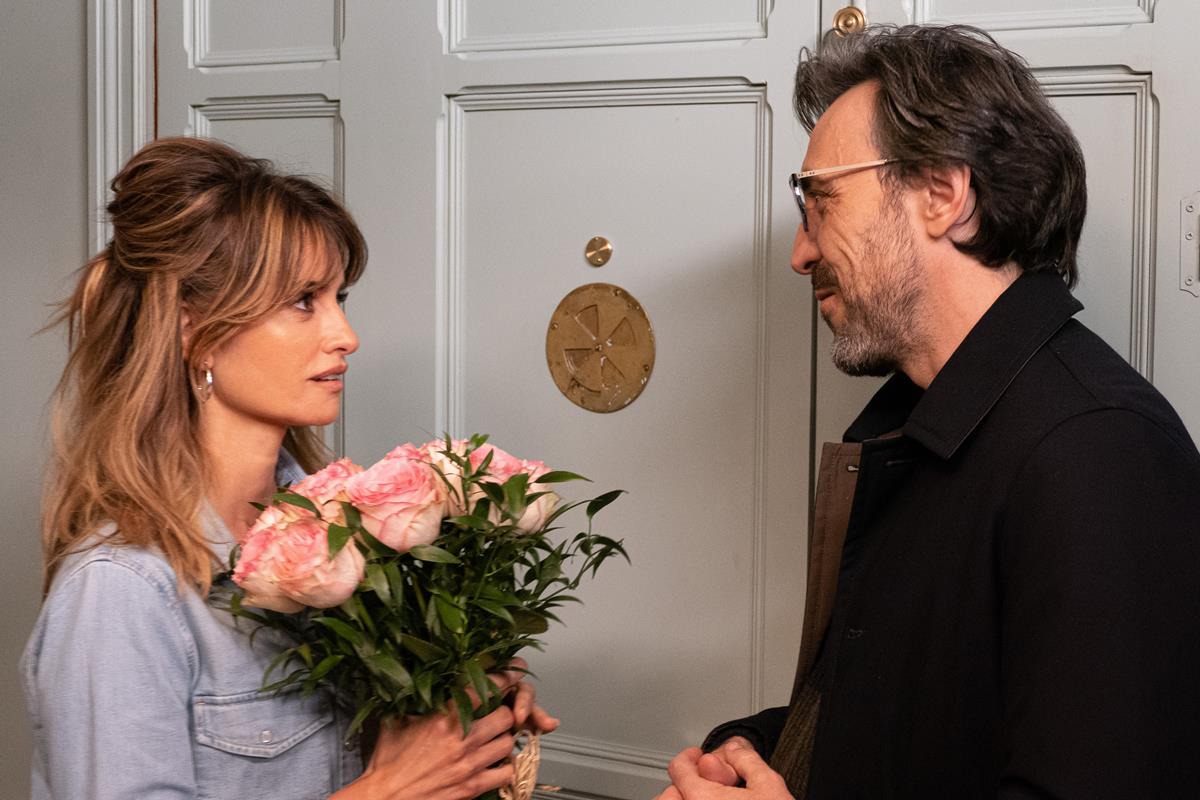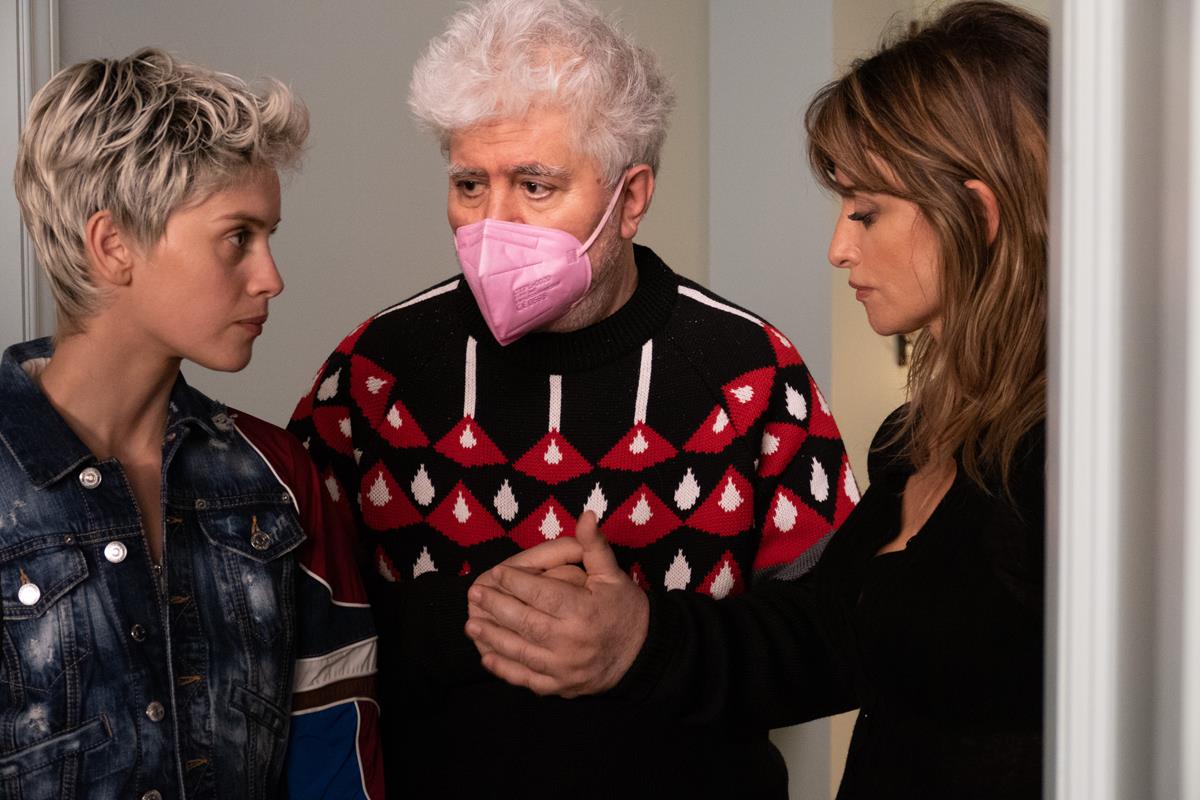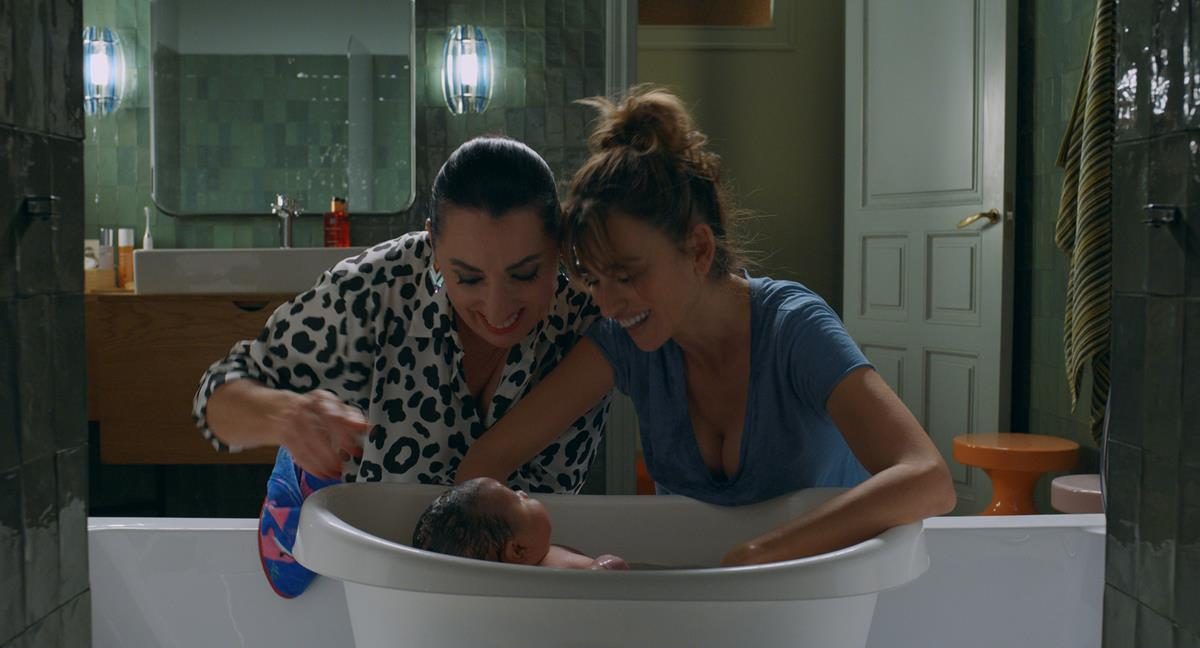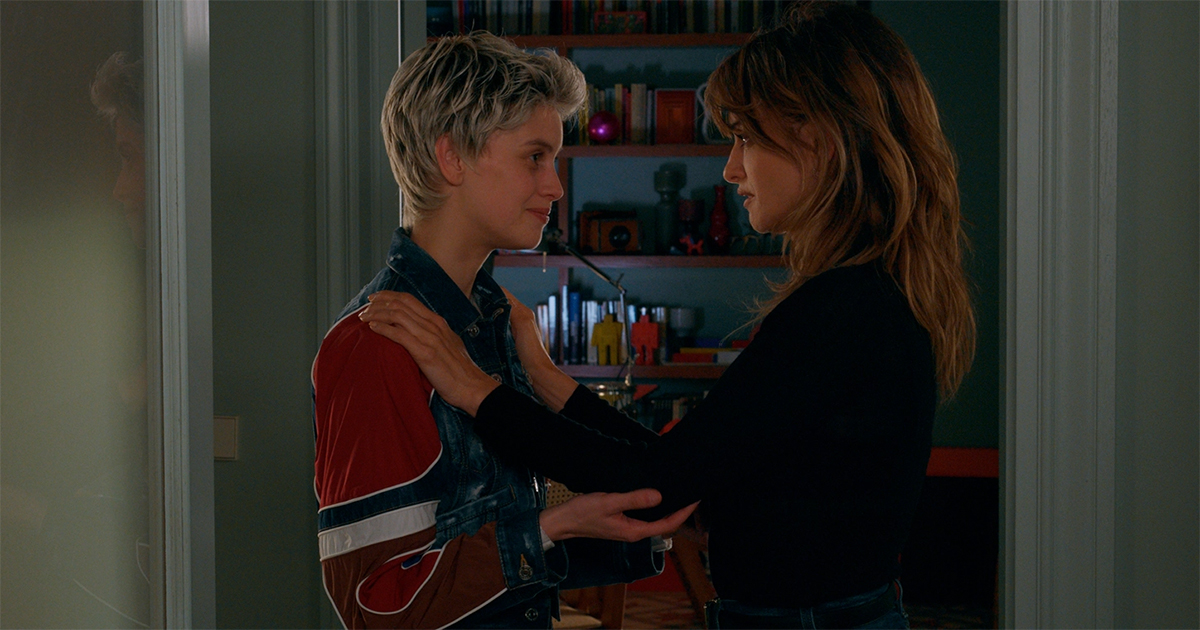
By Pedro Almodóvar’s standards, he has had a fruitful couple of years with two movies: The Human Voice, a short film with Tilda Swinton, and a true return to the feature format with Parallel Mothers. His muse Penélope Cruz (this is her seventh film with the auteur) says that Almodóvar is only happy when he’s working, but this new film also has a message for Spain and for its mothers.
“The problem is that I’m not so young.” Almodóvar admits to Vanity Fair that he can’t move around as much, and so he needs to select his projects more carefully — even though he keeps reading over old scripts, as he did with Parallel Mothers (and, before that, other titles like Talk to Her and Julieta). “They need a certain amount of cooking time to come to a boil, until I’m ready to actually go ahead with them,” he says. Almodóvar won’t say what might be next in line.

By digging the script for Parallel Mothers out of a drawer for his new feature, he returned to his signature theme of the maternal and his signature style of colorful, bold, twisty melodrama. These Almodóvarian hallmarks developed out of his own upbringing, where he was surrounded by powerful women he admired and adored.
Parallel Mothers is bookended by epic historical tragedy: the unmarked, mass graves of lead character Janis’s great-grandfather and his family, victims of the brutal Franco regime and representative of larger, ongoing national pain. “When I tried it out [in the script], I found that it really took over every single scene,” Almodóvar says. “It just overwhelmed any other subject matter that came up.”
READ MORE: Pedro Almodóvar and Penélope Cruz Keep Coming Back to Mothers—And Each Other (Vanity Fair)
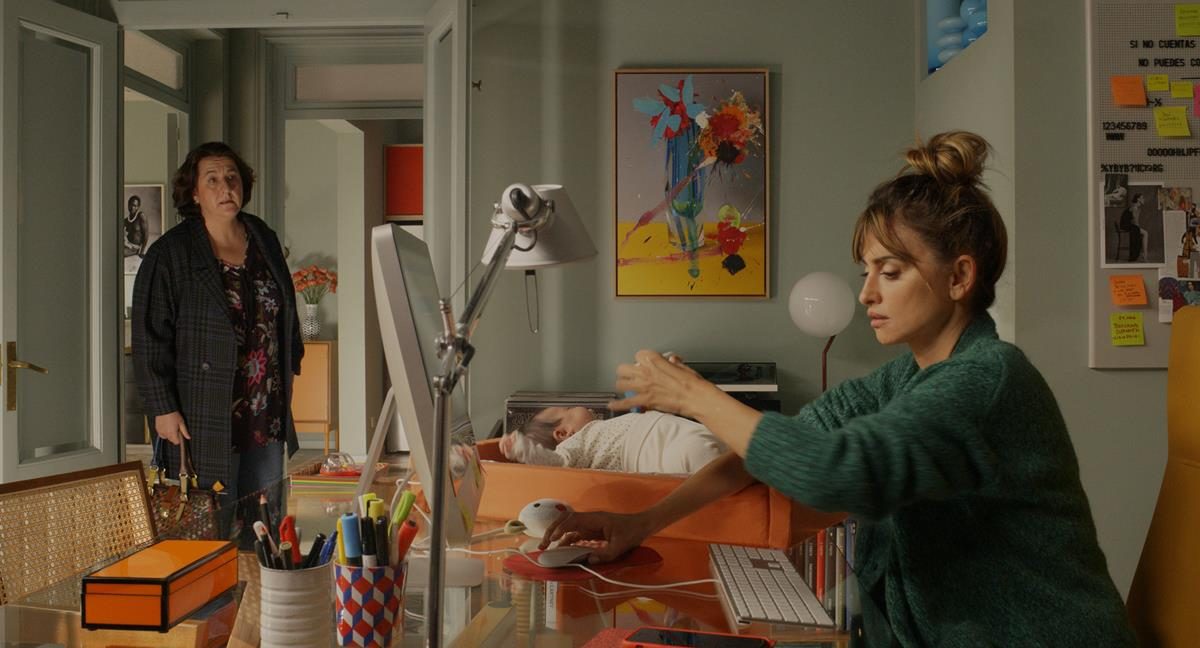
Speaking to the audience at the closing night of the New York Film Festival, Cruz detailed the gestation of the story for Parallel Mothers.
“The first time he shared with me something about this story, we were here in New York, and doing press for All About My Mother,” she said, according to IndieWire. “He told me a few things about this story that changed, evolved a lot into something else, but that was the root of the story.”
READ MORE: Pedro Almodóvar Pitched ‘Parallel Mothers’ to Penélope Cruz During ‘All About My Mother’ Days (IndieWire)

Parallel Mothers was shot by Almodóvar’s longtime collaborator, cinematographer José Luis Alcaine, on a Sony CineAlta VENICE camera outfitted with Leitz Summicron-C Lenses.
Prior to Parallel Mothers opening the 78th annual Venice Film Festival, Sony released a behind-the-scenes clip showcasing its CineAlta VENICE on set with Almodóvar and his crew:
READ MORE: Almodóvar’s Parallel Mothers, Shot on VENICE, Kicks Off the 78th Annual Venice Film Festival (SonyCine)

Marcela Valdes, in The New York Times Magazine, recounted how she asked Alcaine — who is 82 and has shot almost 200 films, including Women on the Verge of a Nervous Breakdown (1988) and Tie Me Up! Tie Me Down (1989) — how it is that Almodóvar is making the best films of his life at an age when so many artists begin to decline. “We can constantly renew ourselves and give another leap and go even farther,” he said.
“It’s not a question of age, he explained,” Valdes writes, “but of temperament, of being the kind of person who keeps pushing, keeps trying new approaches.”
READ MORE: Pedro Almodóvar Is Still Making Movies That Shock (The New York Times Magazine)
One rather novel approach, which surprised a few cinematographers at the film’s screening at the ENERGACamerimage festival in Poland, was that Alcaine shot some interiors at f/11 and even f/22, in order to get as much in focus as possible.
“When viewers are watching a movie they want to be inside it, be a part of it,” Alcaine told Daniel Egan of The Film Stage. “Filming the way we did in Parallel Mothers, the viewers feel like they are in the set looking at the actors. That’s important for capturing the emotions of the scenes.
Alcaine was able to stop down to narrow apertures for a deeper depth of field by setting the Sony VENICE to 4000 ISO. “We can [also] open the shutter to 360 degrees, which essentially means without a shutter,” he added. “If the actors move too much they will be blurred. We choose the moment where they hardly move at all, so we can set the camera to 8000 ISO, which is really a lot. That’s how we get to f/22.”
LIGHTS, CAMERA, ACTION! SPOTLIGHT ON FILM PRODUCTION:
From the latest advances in virtual production to shooting the perfect oner, filmmakers are continuing to push creative boundaries. Packed with insights from top talents, go behind the scenes of feature film production with these hand-curated articles from the NAB Amplify archives:
- Savage Beauty: Jane Campion Understands “The Power of the Dog”
- Dashboard Confessional: Ryusuke Hamaguchi’s “Drive My Car”
- Speak, Memories: Making Kenneth Branagh’s “Belfast”
- “The Souvenir Part II:” Portrait of the Artist As a Young Woman
- Life Is a Mess But That’s the Point: Making “The Worst Person in the World”
The cinematographer feels that compared to the 1940s or 1950s, today’s cinema is “too cold” emotionally. “Half of the screen, maybe two-thirds of the screen, is out-of-focus. The director is driving the viewers on a very specific path,” he explained. “I think it’s better to give a lot of information to the viewers so they can feel they are with the actors, suffering the same emotions.”
READ MORE: Cinematographer José Luis Alcaine on Parallel Mothers and Capturing Pedro Almodóvar’s Emotional Vision (The Film Stage)
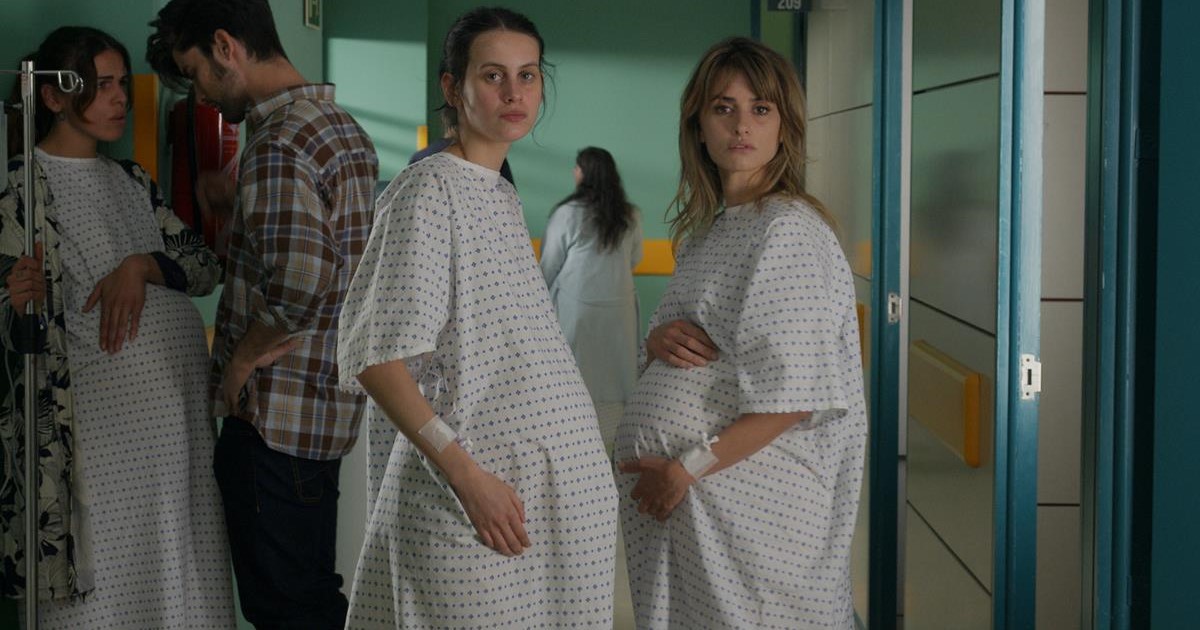
Plenty of directors have a distinct, recognizable style, but “Almodóvar conjures a cosmos,” film critic A.O. Scott writes in his review for The New York Times, “a domain of bright colors, piercing music (often by Alberto Iglesias) and swirling melodrama. If you’ve visited in the past, you will be eager to return.”
Almodóvar’s version of Spain is “informed by that country’s aesthetic and literary traditions, a legacy that encompasses the perverse whimsy of Surrealism and the openhearted pathos of flamenco.” But, as Scott notes, this time the director “adds an element that he had previously avoided: the legacy of the Spanish Civil War and the nearly 40 years of dictatorship that followed.”
READ MORE: ‘Parallel Mothers’ Review: Almodóvar’s Brutal, Beautiful World (The New York Times)
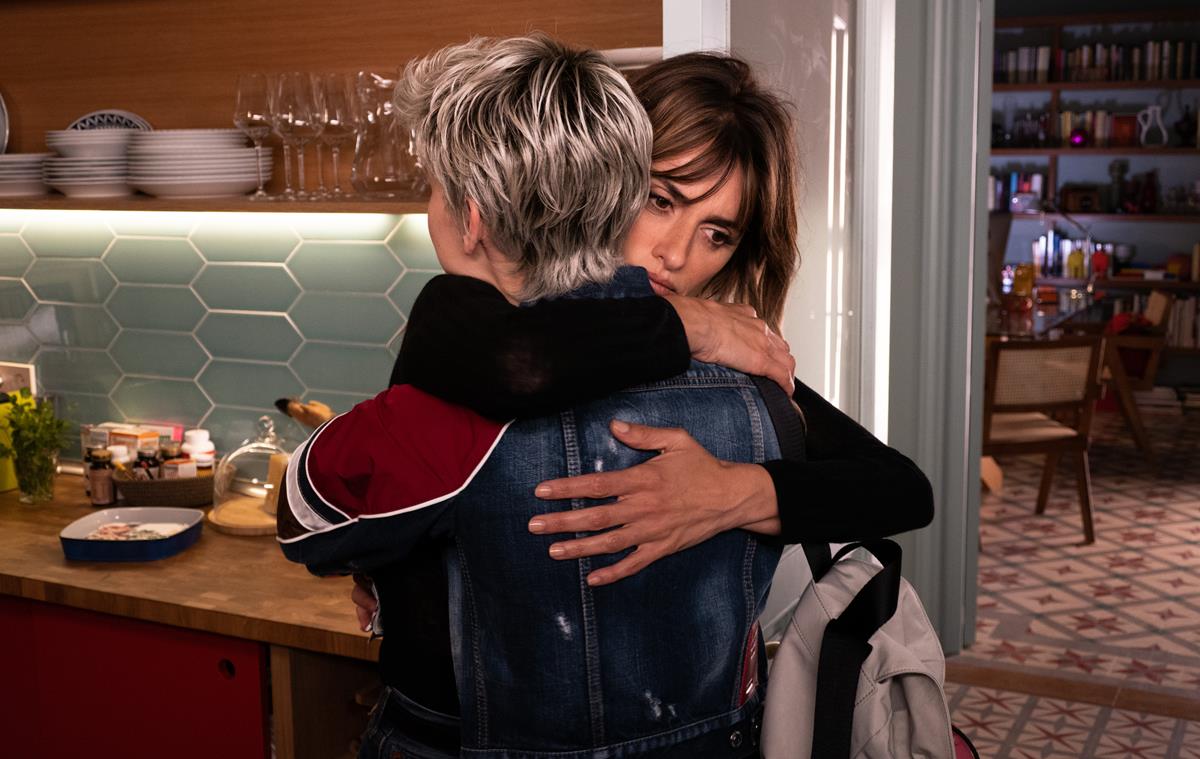
The New Yorker fleshes out the narrative: “It’s a brisk and breathless romantic drama, spanning about four years in the life of a successful Madrid commercial photographer named Janis Martínez (Penélope Cruz), in which historical memory sparks the flames of passion.
“The story begins in the winter of 2016, when Janis is commissioned to do a series of portraits of a forensic archeologist named Arturo (Israel Elejalde).
“Janis and Arturo have an affair, and she gets pregnant; a single woman, she has the child on her own. In the maternity ward, she shares a room with a young woman named Ana Manso Ferreras (Milena Smit); they give birth at just about the same time and become fast friends, but after both are discharged along with their newborn daughters, they fall out of touch.
“Later, they meet again, by chance, when Ana works as a waitress at a café near Janis’s apartment, and they become ever more deeply implicated in each other’s lives. (Janis hires Ana as a live-in babysitter, and they develop a sexual relationship.)”
READ MORE: “Parallel Mothers,” Reviewed: A Breathless Romance Sparked by a Fight for Historical Truth (The New Yorker)

Writing in Film Comment, Manu Yáñez Murillo points to the grand coincidence that underpins the film’s dramatic obstacles: “both of their babies are born on the same day, and both children suffer an illness, ‘extrauterine inadaptation’ and ‘cerebral immaturity.’
“Arriving in what might be considered the most restrained and least flamboyant period of Almodóvar’s career — nothing here feels gratuitous — Parallel Mothers unfolds as both a literal and symbolic response to the infants’ diseases; even more so because the film channels, through the healing processes of its (numerous) mothers, that of a whole country tending to the still-open wounds of its Civil War.”
READ MORE: Secrets and Lies (Film Comment)

Almodóvar wraps his melodrama with the weighty anchor of righting some of the wrongs of his country’s civil war of more than 80 years ago. He told the New York Film Festival how the stories entwined. “I wanted to create a link between the protagonist and the past, the darkest side of the Spanish civil war. This comes through her grandmother who raised her as an orphan.
“She told her the story of how her great grandfather was killed and leaves her this legacy. I wanted to talk about the mass graves, the truth about them and the truth that the character is seeking which contradicts her handling of her own truth.”
Spain has the second largest number of “disappeared” people in the world with a guestimate of 140,000 individuals. The director points out that, with a new socialist government now in power in Spain, this means that the state is currently in charge of pushing forward with the excavations; he is hopeful for a resolution. “People, mostly mothers, just want a place where they can place some flowers,” Almodóvar said at the festival.
READ MORE: Pedro Almodóvar, Penélope Cruz, and Milena Smit on Parallel Mothers (Film at Lincoln Center)
TheWrap’s Steve Pond says the director is aware that his own movies played a key role in Spain’s slow cultural transformation after the 1975 death of Franco. “My life had changed a lot with the arrival of democracy, and the lives of the people around me in Madrid had changed. So, I was interested in telling stories about that change,” he said.

A large contributing factor to that cultural impact was the way Almodóvar, working in film from the 1980s onwards, “played with gender and sexuality.”
“I wasn’t doing it in the spirit of being an activist, and I wasn’t so pretentious as to think I was going to change Spain. I was just trying to describe as accurately as I could what was around me.”
READ MORE: Pedro Almodovar and Penelope Cruz on Pain, Friendship and Sexy Mothers (TheWrap)
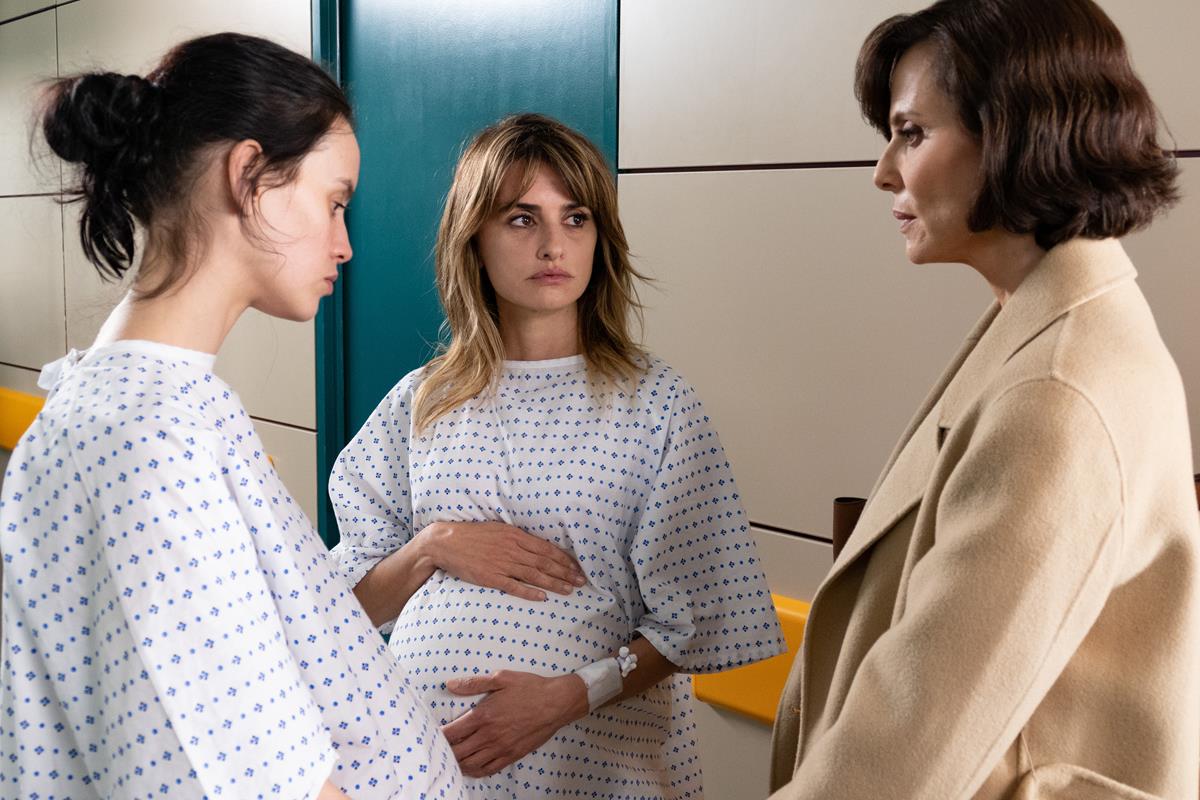
Almodóvar added historical context and more to Parallel Mothers when the director and cast members Cruz and Smit joined NYFF Director Eugene Hernandez to discuss the film during the Closing Night of the 59th New York Film Festival:
READ MORE: Pedro Almodóvar, Penélope Cruz, and Milena Smit on Parallel Mothers (Film at Lincoln Center)

The two women at the heart of Parallel Mothers could represent the two Almodóvars — of yesteryear, and today, says Simon Hattenstone in The Guardian. “Cruz’s Janis and the younger Ana sum up the debate dominating Spain in a simple, impassioned exchange. Ana tells Janis you have to focus on the present to live a fulfilling life; a furious Janis replies you can only make sense of the present if you understand the past — and to fail to do so is a betrayal of your ancestors.
“Almodóvar is not only aware that time is running out to redress the crimes of Franco; he knows that if he hadn’t addressed the issue now, it might well have become too late for him, too.”
READ MORE: Pedro Almodóvar on Spain’s tragic past: ‘You can’t ask people to forget’ (The Guardian)
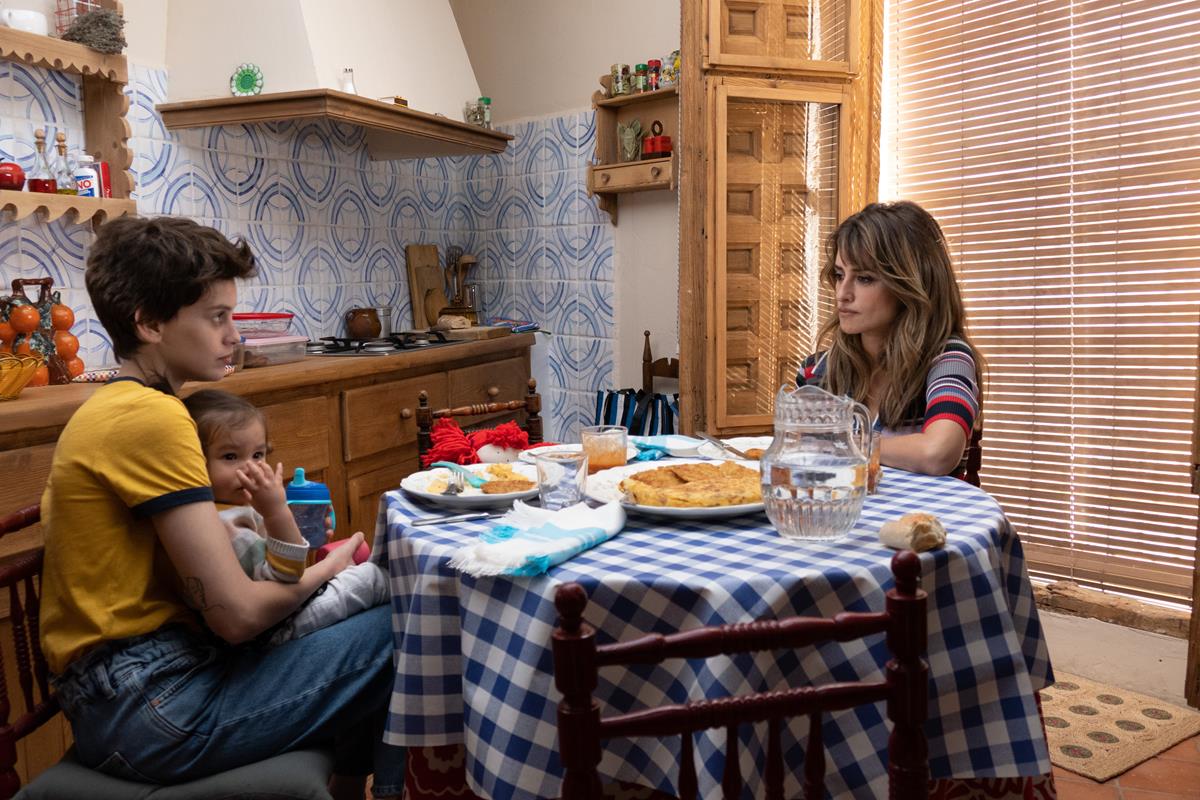
Variety thinks that, with Parallel Mothers, he has struck the right balance with his melodrama and the emotions of history. “Pedro Almodóvar has written and directed 23 feature films since 1978; each one carries his unique style, yet he manages to keep surprising audiences. Parallel Mothers may be his best and most accessible; it features his frequent outrage at government oppression and deceit, mixed with great compassion for his characters.”
READ MORE: Brothers Offer New Perspective on ‘Maternity and Family’ With ‘Parallel Mothers’ (Variety)
SlashFilm agrees that there’s hidden depths in Almodóvar’s new movie and an evolution on show here, “Parallel Mothers may at first present like a run-of-the-mill effort from the face of Spanish cinema, but there’s a deceptive amount of variation here.

“It’s both a perfect distillation of his artistic fascinations and marked evolution in the depth of his thematic explorations. Fans will instantly recognize the hallmarks of vintage Almodóvar in Parallel Mothers. The camp! The melodrama! The illicit romance! The color! The set decoration! The irony!
“Yet even the smallest peek behind the curtain reveals the film to be anything but a retreat into safe territory. Almodóvar brings years of accumulated wisdom to approach longtime fixations from a more comprehensive vantage point.
“Almodóvar’s latest film is an unabashedly sincere salute to the strength that carries an entire country. That appreciation for feminine resolve blossoms radiantly outward in the film. It’s a prayer of thanksgiving and condemnation of the circumstances that made such worship necessary in the first place.
“One searing image at the film’s close poignantly harkens back to the iconic imagery from Spain’s past while also collapsing it into Almodóvar’s own distinctive visual look. The moment lands with decades’ worth of gathering force.”
The contrast of Janis denying her inner truth while pursuing her family’s greater truth adds texture through to this last shot, a paean to sisterhood familiar within Almodóvar’s filmography. “The movie is this beautiful homage to the imperfections of all these three different mothers,” Cruz says. “I love that.”
READ MORE: Parallel Mothers Review: Director Pedro Almodóvar Gets Both Familiar And Evolutionary (SlashFilm)

Brotherhood also gets a look-in, albeit on the other side of the camera, as Tim Gray reveals in a Variety interview with the filmmaker’s brother, Agustín Almodóvar.
“I think Parallel Mothers gives an interesting perspective on maternity and family. This is one of the films in which Pedro refers to families based on love, rather than on biology,” said the younger Almodóvar, who has served as Pedro’s producer since the Law of Desire (1987). “I’m very lucky to be there from the beginning, when a script is just an idea.”
The producer plays two roles, supporting his brother during his creative process by doing research, and finding funds to make the film. “I keep those two things very separate because I don’t want economic constraints to affect Pedro’s creative choices,” he said.
READ MORE: Brothers Offer New Perspective on ‘Maternity and Family’ With ‘Parallel Mothers’ (Variety)
Another common thread in many Almodóvar films was editor José Salcedo Palomeque, but as Variety’s Jazz Tangcay notes, when Palomeque passed away in 2017 his chair was taken by Teresa Font, who cut this latest movie.
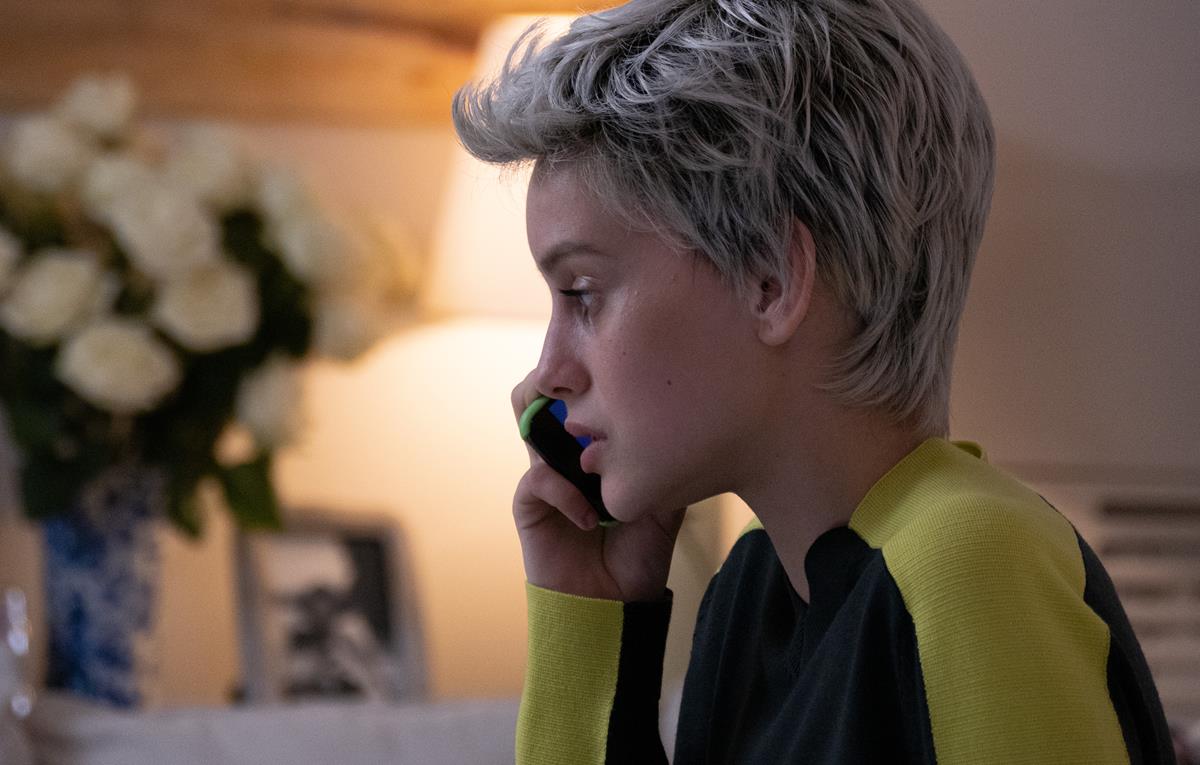
Emotion was imperative to the storytelling, and thus the editing. “The pacing of the film is a very abstract and personal thing, it is driven by whatever a director’s ideas are about narration and by the genre of the film,” Almodóvar told Tangcay. “The idea is to hold on to a shot until it becomes expressive, at the moment when it ceases to be, is when one must cut.”
To help with that emotion, Font put herself in the actor’s position — in this case Cruz’s shoes. To know where to cut, Font had to “feel how she feels and have that sense of what the emotion tells you.”
READ MORE: Pedro Almodovar on Creating ‘Rapid and Tense’ Storytelling Through Editing in ‘Parallel Mothers’ (Variety)
“Parallel Mothers often finds Almodóvar doing Almodóvar, leaning into all of his tics and obsession for this tale of two women whose lives become forever linked when they meet in a maternity ward,” Ben Croll writes in his review of the film for The Wrap.
“With nearly half his film spent in Janis’ (typically ostentatious) Madrid apartment, Almodóvar plays with theatrical affectations, often allowing the background lights to fall out, isolating the lead actress in a pool of black to punctuate key emotional moments. And naturally, the director’s work with actors Cruz and Smit results in typically stellar performances, especially in scenes where the two leads play off one another, wordlessly conveying currents of guilt, tenderness, jealousy and desire.”
READ MORE: ‘Parallel Mothers’ Film Review: Pedro Almodóvar Both Fulfills and Upends Expectations (The Wrap)

Alongside aesthetically even composition and a bold use of color, one of the hallmarks of Almodóvar’s distinctive style is his penchant for center-frame composition, Meg Shields notes at Film School Rejects.
“Wes Anderson is certainly a noteworthy proponent of the ‘putting things in the middle of the shot’ school. The same is true, of course, for Stanley Kubrick, whose notorious perfectionism often manifests in meticulously crafted shots that skirt naturalism in favor of unnervingly symmetrical visuals.
“But I’ll admit, when it comes to center-framed cinema, the work of Pedro Almodóvar never sprung to mind. As a fan of center frames and of Almodóvar’s work, this is a sin on multiple fronts. Perhaps I was dazzled by the tomato-reds and enthusiastic embrace of kitsch and camp.”
READ MORE: The Center-Framed Cinema of Pedro Almodóvar (Film School Rejects)
A (partially NSFW) video essay from the Little White Lies YouTube channel, directed by Luís Azevedo produced by Adam Woodward, takes viewers on a symmetrical tour through the films of the Spanish filmmaker:
Want more? Watch Little White Lies’ “Hearing Pedro Almodóvar — A Lesson in Sound Design,” which delves into how the Spanish auteur uses sound in his films, from Volver to Pain and Glory:
In a post-screening conversation at AFI Fest 2021 moderated by film critic Alonso Duralde, Almodóvar discusses the genesis of Parallel Mothers, including how long the idea for the film had been in his head just waiting to be shared:
If you want still more from Almodóvar, The Spectator has a list of ten films by this iconic Spanish director that are “worth a watch.”




